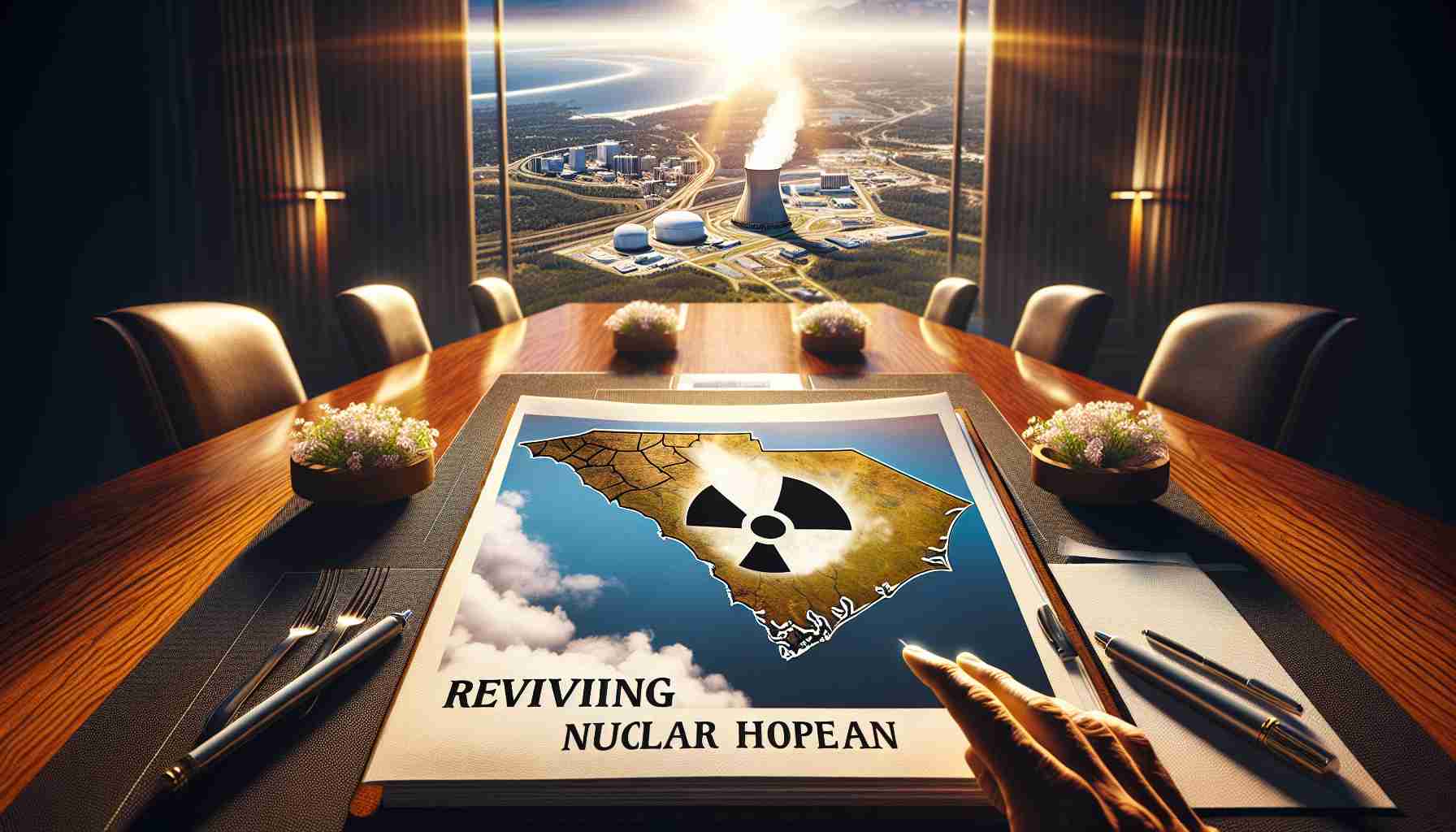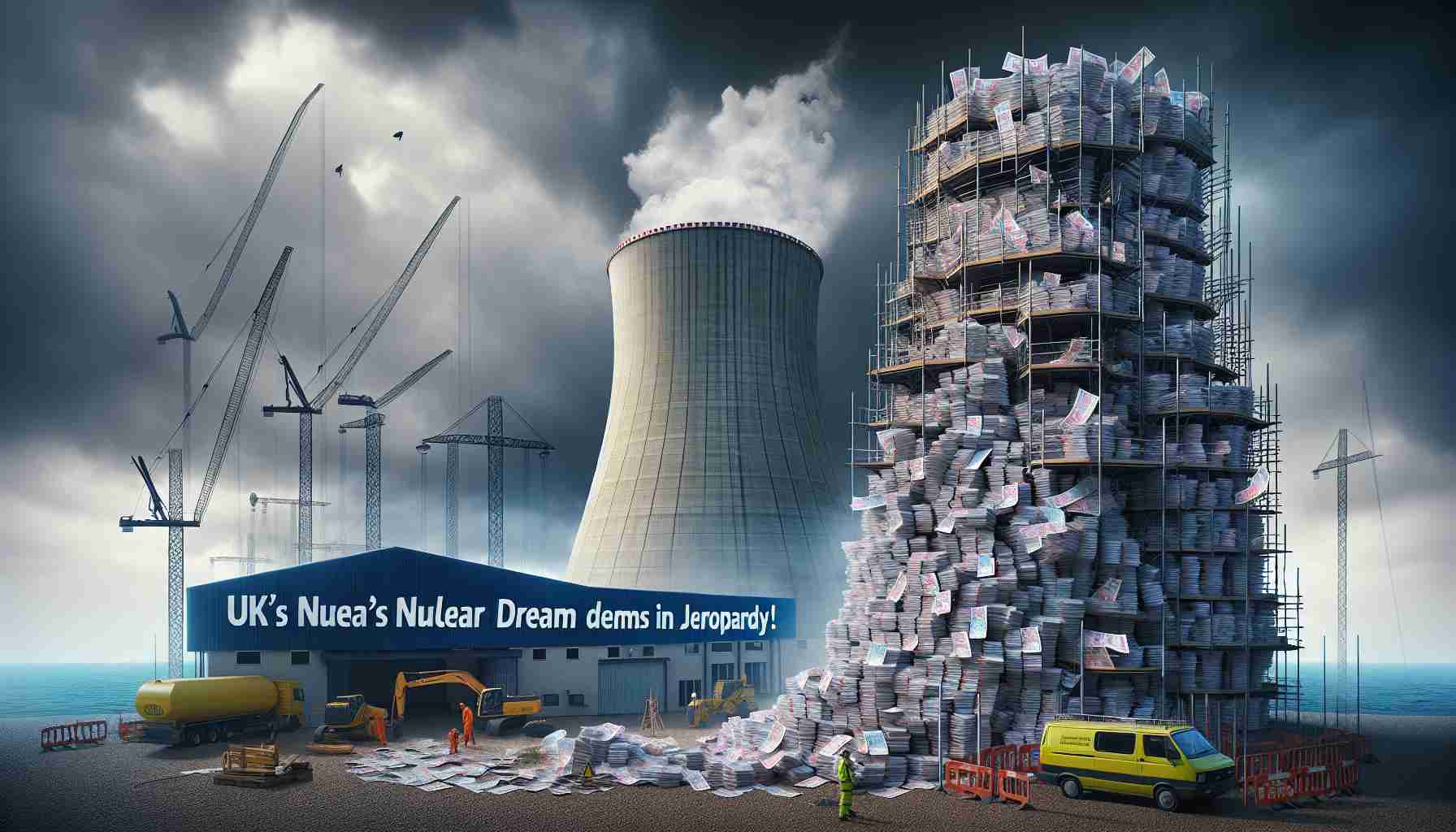Tech Powerhouses Turn to Nuclear Energy
In a groundbreaking alliance, TerraPower, a nuclear energy innovator established by Bill Gates, has partnered with Sabey Data Centers (SDC) to explore the use of advanced nuclear reactors for powering data centers across the United States. As tech companies grapple with the enormous energy demands of artificial intelligence, many are seeking reliable alternatives to traditional power sources.
TerraPower and SDC’s agreement signals a new era of strategic collaboration aimed at supporting the energy requirements of growing data center facilities. Their initial focus will be on sites in Texas and the Rocky Mountain area, where they envision the deployment of next-generation nuclear technology.
While this initiative promises a transformative approach to energy consumption, it is not without its challenges. The innovative reactors designed by TerraPower must navigate complex regulatory environments and demonstrate commercial viability before they can be operational. Unlike their larger predecessors, these smaller reactors aim to provide a more manageable and sustainable energy solution.
Bill Gates has expressed confidence in nuclear energy’s potential to combat climate change, highlighting advancements in design that prioritize safety and waste management. TerraPower’s Natrium reactor stands out as the only approved technology seeking construction permits from U.S. authorities, and a demonstration project has already begun in Wyoming, with expectations to be operational by 2030.
As Microsoft, Google, and Amazon encourage nuclear development for their data centers, the future of nuclear energy appears promising in addressing the looming energy crisis.
The Broader Implications of Advanced Nuclear Energy Adoption
The partnership between TerraPower and Sabey Data Centers heralds a significant shift not only in energy production but also in the socio-economic landscape of the United States. As tech giants pivot towards nuclear energy, the ramifications extend far beyond their data centers. This move could fundamentally alter the global energy economy, fostering a wave of investment in nuclear technology and creating new job opportunities in engineering, construction, and operations. The promise of reliable and scalable energy sources may allow tech companies to deepen their foothold in emerging markets, while also contributing to local economies in regions where these facilities are established.
From an environmental perspective, the deployment of advanced nuclear reactors could play a pivotal role in mitigating climate change. With CO2 emissions being a pressing concern, shifting to nuclear energy can significantly reduce the carbon footprint of data centers—whose energy demands are expected to double in the next decade. Furthermore, utilizing smaller, safer reactors could lead to reduced land use and less water consumption compared to traditional energy sources.
Looking forward, the long-term significance of this partnership could redefine nuclear energy’s place in society. If successful, it may pave the way for increased acceptance and investment in nuclear solutions globally, while inspiring new policies that facilitate the global transition to clean energy. In this context, the advanced nuclear movement could emerge as a cornerstone for sustainable development strategy, balancing technological growth with environmental responsibility and economic resilience.
Powering the Future: How Nuclear Energy is Transforming Data Centers
The Rise of Nuclear Energy in Tech
In recent years, the urgency for sustainable and reliable energy sources has become increasingly paramount, particularly among tech giants that operate data centers worldwide. Notably, TerraPower, a company co-founded by philanthropist and Microsoft co-founder Bill Gates, is at the forefront of this shift, entering a significant partnership with Sabey Data Centers (SDC). This collaboration explores the implementation of advanced nuclear reactors to sustainably power data centers across the United States, particularly in Texas and the Rocky Mountain region.
Key Features of Advanced Nuclear Reactors
1. Small Modular Reactors (SMRs): Unlike traditional nuclear reactors that are typically large and complex, TerraPower’s designs focus on SMRs. These smaller reactors aim to enhance safety and efficiency while addressing the environmental impact of energy production.
2. Natrium Reactor Technology: The Natrium reactor, a groundbreaking design developed by TerraPower, is designed for flexibility, allowing it to be integrated alongside renewable energy sources. It utilizes molten salt for energy storage, potentially increasing reliability for data centers.
3. Safety Innovations: Advances in reactor design continue to prioritize safety, reducing the risk of catastrophic failures and improving waste management strategies. These innovations are crucial as they build public trust in nuclear energy.
Use Cases for Nuclear-Powered Data Centers
With energy demands surging due to the rise of artificial intelligence and cloud computing, companies like Microsoft, Google, and Amazon are looking towards nuclear power as a viable solution. Nuclear energy offers:
– Reliability: Unlike solar and wind, which can be intermittent, nuclear provides a stable energy supply, essential for the 24/7 operation of data centers.
– Reduced Carbon Footprint: As companies strive for net-zero emissions, nuclear energy presents a carbon-neutral option, aligning with corporate sustainability goals.
Pros and Cons of Nuclear Energy for Data Centers
Pros:
– Predictable energy costs due to stable operational expenses.
– Significant reduction in greenhouse gas emissions compared to fossil fuels.
– Capacity to meet growing energy demands without exacerbating climate change.
Cons:
– Regulatory challenges and long approval processes can delay development.
– Public perception issues surrounding safety and waste disposal.
– High initial capital investment required for construction and operational training.
Innovations and Future Trends
The partnership between TerraPower and SDC represents just one example of the ongoing innovation within the nuclear sector tailored toward sustainable technology solutions. Predictions suggest that as costs decrease and technology matures, more tech companies will adopt nuclear strategies, potentially reshaping the energy landscape.
The urgency for clean energy solutions continues to grow, compelling utilities and tech giants alike to reconsider their energy strategies. The first operational plants utilizing TerraPower’s reactors are projected for completion by 2030, marking a pivotal moment in the shift towards nuclear energy in the tech industry.
Market Analysis and Predictions
As the demand for energy-efficient tech solutions grows, investments in nuclear energy are likely to increase. A market shift towards nuclear-powered data centers could lead to a substantial reduction in operational costs for tech companies and greater energy security.
The collaboration between innovative companies in the tech and energy sectors represents a transformational opportunity—not just for energy consumption but also for the advancement of nuclear technology itself. For ongoing developments and insights into the future of energy technologies, check this link.
This forward-thinking approach may not just alleviate energy burdens; it could offer a blueprint for sustainable tech operations, influencing how industries address climate change and energy demands in the years ahead.
The source of the article is from the blog lanoticiadigital.com.ar



